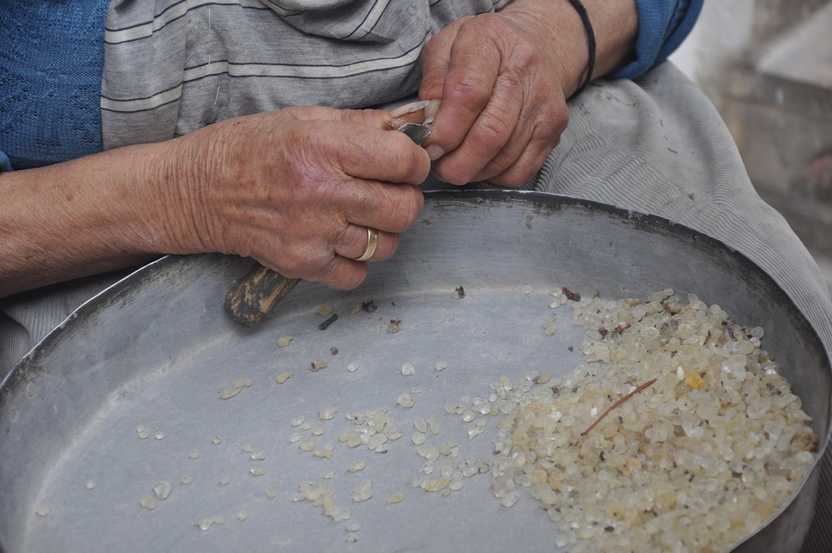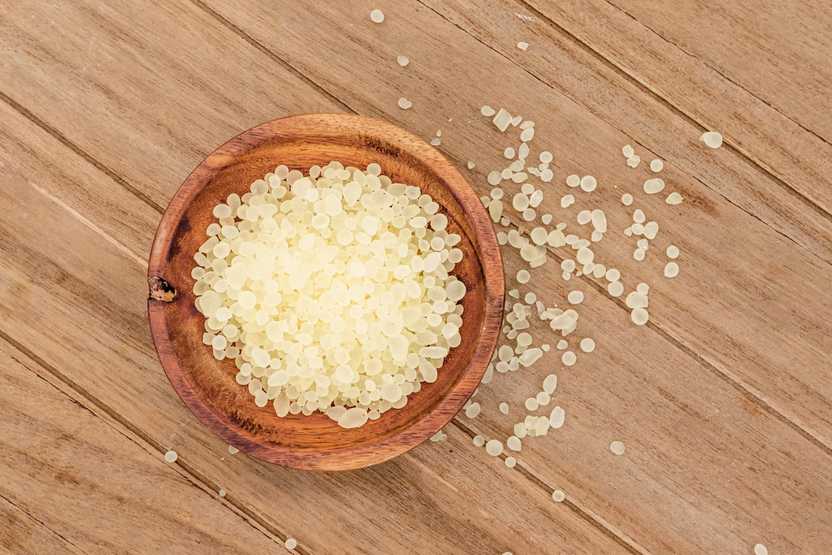How long to chew mastic gum
How long should you chew mastic gum? How many pieces at a time? How often? The answer to these questions is: it depends.

For a stronger jawline and a better you
How long should you chew mastic gum, and for how often? How much should you chew at a time?
The answer is, it depends on what you’re trying to accomplish.
Chances are, if you’re reading this, you’re interested in sculpting a great-looking, more defined jawline. If so, chewing high-quality mastic gum such as Greco Gum will get you there faster and in more style than any other method we know.
In a nutshell:
- How long should you chew mastic gum? For about thirty minutes at a time.
- How often should you chew? Up to three times a day.
- How many pieces should you chew? Eight to ten droplets, or three to five nuggets.
Start light
If you’ve spent any time in the gym, you know about the principle of progressive resistance. This means start light, and go heavier little by little.
When you first open up that pretty blue tin of Greco Gum, you may be tempted to stuff your cheeks with the golden tears until they bulge like a chipmunk’s, then chew on the massive wad for an hour or so.
Don’t do it.
Ask me how I know.
You will get much better results by starting with either a pinch (maybe five or six) of the droplets, or two nuggets, and chewing for fifteen minutes. Stop before your jaws get tired or sore.
Keep it fresh
You can keep your chewed gum fresh by putting it in the refrigerator, or in a glass of water. The next time you chew it, it will be extremely stiff, but let it warm up in your mouth for a bit, and you’re ready to go. Some people chew every day, but for now, try three days a week. You can always increase training frequency later.
When you’re comfortable with fifteen minutes, you may increase it to twenty, and then twenty-five, and so on. When this becomes too easy, start adding more mastic gum droplets or nuggets. Your goal is always to find the amount and time that gives a challenging chew, without causing jaw pain.
Avoiding common side effects of mastic gum chewing
While chewing mastic gum is a relatively risk-free pursuit, like any exercise activity it is possible to hurt yourself if you go at it for too long, too hard, too fast, or carelessly.
One symptom that noob mastic gum chewers experience is discomfort in the temporomandibular joint, or TMJ for short. That’s the spot, right below the ear, which forms the hinge of your jaw. If you get punched there hard enough, you might get knocked out, and if you chew too much mastic gum for too long, your TMJ might be sore for a while.
If it happens, don’t worry, it’s only temporary. Rest for a day or two, until the discomfort subsides. Reduce the load, the time, and the intensity for a few sessions. If, however, the pain is sudden, intense, or lasts more than a few days, and applying ice doesn’t make the discomfort go away, seek medical or dental attention.
Shut your mouth!
You can avoid the equally painful side effect of biting your tongue or the inside of your cheek by chewing slowly and carefully with your mouth closed.
Not only will this keep you from making those annoying smacking sounds, but it also develops the habit of breathing through your nose, which itself will help improve the shape of your face.1 It will also keep the gum from becoming brittle, as it sometimes does when it contacts the air.
When you’re not chewing, try mewing
A great “active recovery” exercise for when you don’t actually have a wad of mastic gum in your mouth is mewing, which is simply keeping your lips together, gently clenching your teeth, and pushing your tongue firmly against the roof of your mouth.
This exercise, invented by John and Michael Mew, a pair of eccentric British orthodontists, is said to dramatically improve tooth alignment, and the shape of the face in general, by promoting widening of the maxilla, or upper jaw.
And that brings us to a few of the other benefits of chewing mastic gum, in addition to helping you build a better jawline.
Better oral health
Before there were orthodontists, dentists, dental hygienists, or even toothbrushes and toothpaste, people in Ancient Greece depended on the chewy resin from the mastic tree to keep their teeth white, straight, and cavity-free.


Photos by Gabe Peyser and Gonca Özkutlu.
They may not have known that tooth decay is caused by mouth bacteria, or that mastic gum has antibacterial properties, but they knew that it worked.23
Now, you might be thinking, wouldn’t regular sugar-free gum provide the same anti-cavity benefits? Well, yes and no. Mostly no. It’s true that “four out of five dentists recommend sugar-free gum for their patients who chew gum,” but those dentists made that recommendation before most of the gum on the market was made of toxic petroleum distillates pumped full of artificial sweeteners and flavors.
So even if you can find some type of gum made of natural chicle, flavored with natural flavors, and sweetened with xylitol, you ought to know that research has shown that chewing mastic gum is more effective at preventing tooth decay and even repairing damaged tooth enamel.4
If oral health is your primary goal, try chewing eight to ten droplets, or two to four nuggets, after dinner for fifteen to twenty minutes.
The same precautions about working up slowly and avoiding discomfort apply. For more about the dental health benefits of chewing mastic gum, read this blog post.
Better digestive health
Until recently, people thought peptic ulcers were caused by stress, or secretion of too much stomach acid. We now know that ulcers and other gastrointestinal problems are caused by a species of bacteria called Helicobacter pylori. It just so happens that the volatile oils in mastic gum, called terpenes, are effective at killing the H. pylori bacteria in your stomach and intestinal tract, promoting overall gut health.25
Chewing mastic gum also stimulates the salivary glands, which helps digestion of carbohydrates, helps regulate cholesterol and blood sugar, and even provides beneficial antioxidants, which may help prevent the formation of cancer cells.26
The Ancient Greeks may not have known about H. pylori, or cholesterol, or antioxidants, but they did know that a post-meal mastic chew, or a sip of mastichato liqueur, or even adding powdered mastic gum to their food, helped prevent heartburn and indigestion, while cutting cravings for sweets, which promoted weight loss.

Today you can buy powdered mastic resin supplements on Amazon, and swallow a few capsules after dinner to promote gut health, but what fun is that? An after-meal chew would be far more satisfying.
For better digestive health, start with five to eight droplets, or two nuggets, of Greco Gum, and chew for fifteen minutes after every meal.
Improved mental ability
The fact that you’re reading this, and that you have purchased, or are seriously considering the purchase of high-quality Greco Gum proves that you’re already smart. But did you know that chewing mastic gum can actually make you even smarter?
According to research, chewing gum for just five minutes before a task can reduce stress levels and improve cognitive performance.78 Granted, the scientists did not specify what type of gum was used in their experiments, but we can certainly surmise that their results would have been much more dramatic had they used mastic gum.
When the great philosophers of Ancient Greece and Rome would meditate deeply on an issue, or contemplate a solution to a problem, they were said to “ruminate”. This word comes from Latin, and means “to chew on something”, indicating that deep thinking has been linked to chewing since ancient times.
Hardly by coincidence, another word meaning “to chew” is “masticate”, a Greek-origin word with “mastic” right there front and center. Is it too much of a stretch to imagine Socrates ruminating on the eternal questions of the universe while thoughtfully masticating a wad of mastic gum? We think not. And science is on our side.

So before that important final exam or job interview (but not during) whip out your can of Greco Gum and have a good chew. Your brain will thank you.
To improve mental performance, chew five to eight droplets or two to three nuggets for fifteen minutes.
Gradually increase the chewing time, rather than the amount of gum chewed.
This article originally appeared online in 2023; it was most recently updated on February 20, 2024, to include current information.
References
Footnotes
-
Catlin, G. Shut Your Mouth and Save Your Life: The Dangers of Mouth Breathing and Why Nose or Nasal Breathing is Preferred, Based on the Native American Experience: 1870, N. Trubner & Co. ↩
-
Paraschos S, Mitakou S, Skaltsounis AL. Chios gum mastic: A review of its biological activities. Curr Med Chem. 2012;19(14):2292-302. doi: 10.2174/092986712800229014. PMID: 22414110. ncbi.nlm.nih.gov. ↩ ↩2 ↩3
-
Alwadi MAM, Sidhu A, Khaled MB, Aboul-Enein BH. Mastic (Pistacia lentiscus) gum and oral health: a state-of-the-art review of the literature. J Nat Med. 2023 Jun;77(3):430-445. doi: 10.1007/s11418-023-01704-y. Epub 2023 May 6. PMID: 37147480. ncbi.nlm.nih.gov. ↩
-
Biria, M; Malekafzali, B; Kamel, V. Comparison of the Effect of Xylitol Gum- and Mastic-chewing on the Remineralization Rate of Caries-like Lesions. Journal of Dentistry; Tehran Vol. 6, Iss. 1, (2009): 1-6. proquest.com. ↩
-
Dabos KJ, Sfika E, Vlatta LJ, Giannikopoulos G. The effect of mastic gum on Helicobacter pylori: a randomized pilot study. Phytomedicine. 2010 Mar;17(3-4):296-9. doi: 10.1016/j.phymed.2009.09.010. Epub 2009 Oct 29. PMID: 19879118. ncbi.nlm.nih.gov. ↩
-
Kartalis A, Didagelos M, Georgiadis I, Benetos G, Smyrnioudis N, Marmaras H, Voutas P, Zotika C, Garoufalis S, Andrikopoulos G. Effects of Chios mastic gum on cholesterol and glucose levels of healthy volunteers: A prospective, randomized, placebo-controlled, pilot study (CHIOS-MASTIHA). Eur J Prev Cardiol. 2016 May;23(7):722-9. doi: 10.1177/2047487315603186. Epub 2015 Aug 26. PMID: 26311707. ncbi.nlm.nih.gov. ↩
-
Onyper SV, Carr TL, Farrar JS, Floyd BR. Cognitive advantages of chewing gum. Now you see them, now you don't. Appetite. 2011 Oct;57(2):321-8. doi: 10.1016/j.appet.2011.05.313. Epub 2011 May 27. PMID: 21645566. ncbi.nlm.nih.gov. ↩
-
Zibell S, Madansky E. Impact of gum chewing on stress levels: online self-perception research study. Curr Med Res Opin. 2009 Jun;25(6):1491-500. doi: 10.1185/03007990902959283. PMID: 19425900. ncbi.nlm.nih.gov. ↩
